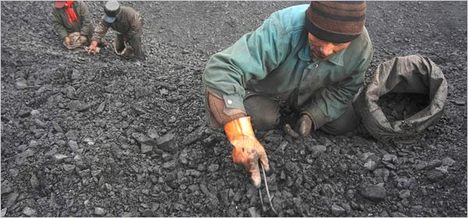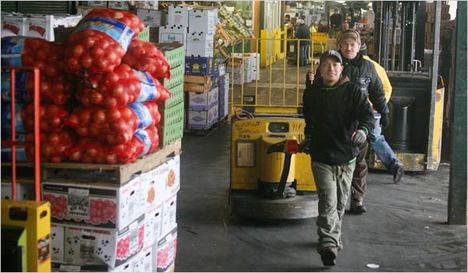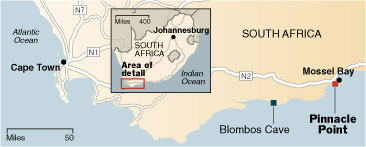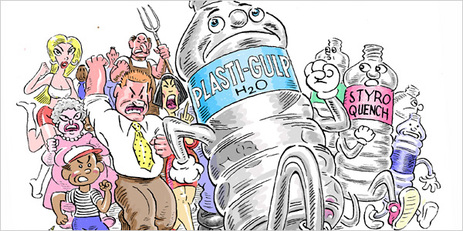“Without DNA tests, the rare greenback cutthroat trout, left, and the Colorado River cutthroat fish are difficult to tell apart.” Source of caption and photo: online version of the NYT article quoted and cited below.
(p. 26) DENVER, Oct. 13 (AP) — State and federal biologists, who are smarting from research showing that they may have been protecting the wrong fish the past 20 years, are regrouping in their efforts to restore the rare greenback cutthroat trout to Colorado waters.
Tom Nesler, the state biologist, had hoped to see the fish removed from the endangered species list during his career. He concedes that might not happen if it turns out some of the greenback populations biologists thought they were saving are actually the similar but more common Colorado River cutthroat trout.
A three-year study led by University of Colorado researchers and published in August found that out of nine fish populations believed to be descendants of original greenbacks, five were actually Colorado River cutthroat trout.
The recovery effort was thought to be near its goal of establishing 20 self-sustaining greenback populations.
“Hey, science happens,” said Mr. Nesler with a shrug as he discussed the findings.
. . .
The Colorado Division of Wildlife has spent an average of $320,000 annually for the past five years to restore the greenback. Most of the money has come from state lottery revenue; no state tax dollars have been used.
. . .
“Science is not about proof and certainty,” he said, “it’s about testable hypotheses.”
For the full story, see:
(Note: ellipses added.)




 Source of graph: online version of the NYT article quoted and cited below.
Source of graph: online version of the NYT article quoted and cited below.
 Source of image: online version of the WSJ article quoted and cited below.
Source of image: online version of the WSJ article quoted and cited below.

 "An iceberg as seen off the coast of Twillingate in Newfoundland." Source of caption and photo: online version of the WSJ article quoted and cited below.
"An iceberg as seen off the coast of Twillingate in Newfoundland." Source of caption and photo: online version of the WSJ article quoted and cited below. Brian Bryne (sic), a New York City artist, along with a partner, bought this Newfoundland house as a speculative investment. Source of photo: online version of the WSJ article quoted and cited above.
Brian Bryne (sic), a New York City artist, along with a partner, bought this Newfoundland house as a speculative investment. Source of photo: online version of the WSJ article quoted and cited above.
